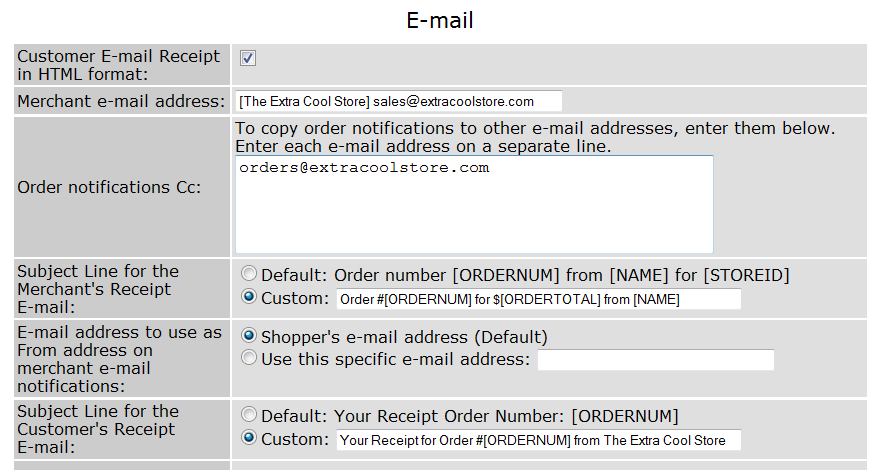E-mail Notification of Orders in ShopSite
You might think that the subject line of an order notification e-mail doesn’t matter too much. You might also think that having that order notification come from the shopper’s e-mail address would be ideal, since you could then just reply to the e-mail if you had a question about the order for the shopper. But, if you thought this to be the case (as I did), you would be wrong… at least according to some merchants.
![]() For over 14 years ShopSite order notification e-mails have taken the following format:
For over 14 years ShopSite order notification e-mails have taken the following format:
From: JaneSmith@gmail.com
Subject: Order number 1858 from Jane Smith for extracoolstore
As you can see in the example, the subject line details who placed the order (Jane Smith), the order number (1858), and if you have multiple stores, you can even see which store the order came from (extracoolstore). What more could you need?
For some merchants, having the shopper’s e-mail address in the “From” field causes their spam filter to complain, possibly sending the order notification e-mail to a junk folder. If the order notification e-mail could be sent from the same address every time, the spam filter could be configured to allow e-mail from that specific address.
Additionally, some mail servers (typically on Windows) will not forward e-mail that is from a domain name that is different from the server for the merchant’s store (where ShopSite is generating the e-mail notification.)
As for the subject line, some merchants prefer to have the order total included, as well. By including the order total they could quickly determine if they have a large, important order or perhaps a large, fraudulent order. When viewing e-mails on your computer, scanning the body for the order amount is probably not going to be a big deal. But, if you are having the notifications sent to your mobile phone, then the subject line becomes important in determining if you are going to take the time to open the e-mail and read it on your small screen.
Mobile users may also prefer a shorter subject line. For example, if you only have one store, there is no need to have the store name in the subject. Likewise, you could replace “Order Number” with just “#” to reduce the number of characters in the subject field, etc.
Whatever the case, ShopSite can accommodate either need. Beginning with v10 sp2 (service pack 2) e-mail settings were enhanced and consolidated in the Commerce Setup > Order System > E-mail section. The main part of this section is displayed below.
In the Merchant e-mail address field above, I’ve placed “[The Extra Cool Store]” before the merchant’s e-mail address. When the shopper gets the e-mail, the “From” field will now look similar to:
From: The Extra Cool Store [sales@extracoolstore.com]
As you can see from the example above, I’ve also modified the e-mail receipt subject line for both the merchant and the shopper.
Instead of:
Order number 1858 from Jane Smith for extracoolstore
it will appear to the merchant as:
Order #1858 for $75.99 from Jane Smith
In the settings above I am using the shopper’s e-mail address as the From address for the merchant notification. But you can see how I could have changed it to a specific address. Hopefully you will find a few of these features for e-mail notifications as useful as I have.




